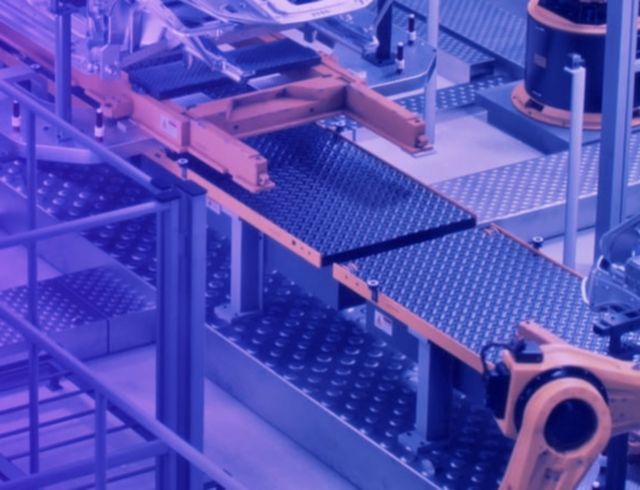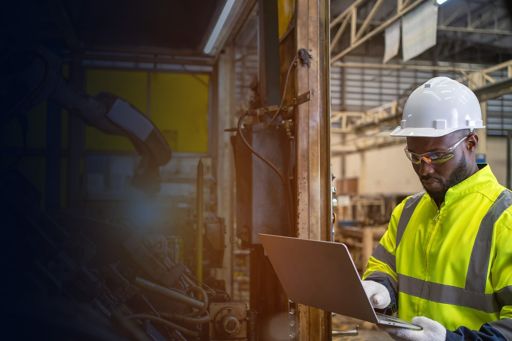While electric vehicles (EVs) are good for the planet, they could also be good for the Canadian economy.
Canada has been building automobiles for more than a century, but the country has an opportunity to leverage its unique assets to build a 'mines to mobility' ecosystem to move Canada from a player in the EV sector to a leader.
Canada has access to many of the critical resources to become a leader: established manufacturers and suppliers, skilled labour, government support, access to critical minerals needed to build the batteries that power EVs and proximity to the U.S. market.
The evolution of the automotive industry
Multiple original equipment manufacturers (OEMs) have made substantial commitments and set timelines for the switch to EVs. A number have committed to stop selling gas or diesel cars by 2035. While others are taking a more phased approach with reduction targets starting as early as 2030.
In KPMG's 2021 survey of global auto executives, all respondents expect market share of EVs to grow dramatically by 2030, with most expecting it to be 50 per cent or more.
Supply chain disruptions have plagued the industry and its suppliers over the past two years, thanks to an ongoing pandemic and various global conflicts, creating price hikes and persistent shortages. But supply chains were already strained prior to the pandemic as the industry shifted from internal combustion to electric vehicles—with pain points amplified throughout the pandemic.
Building electric vehicles and EV components in Canada could enhance the ecosystem and help protect the supply chain from further disruption. In North America, Ontario already ranks as the No. 2 auto producer (after Michigan) and the No. 2 information technology cluster (after California). The province is looking to maintain and grow its auto sector by building at least 400,000 electric and hybrid vehicles by 2030, according to Phase 2 of Ontario's automotive plan.1
Localizing the production of EVs
Canada is home to both the raw materials and skilled workforce required for EV production. This provides a unique opportunity for Canada to convert its existing auto ecosystem to EVs while leveraging its access to the resources required to build the batteries that power them. Already, the first Canadian-made hybrid SUV has rolled off the line in Cambridge, Ont.
Localized manufacturing will simplify the supply chain while creating opportunities for global trade. Several vehicle manufacturers have already laid out plans to build electric vehicles or EV components, such as batteries, in Canada. Federal and provincial government support has been critical in securing these investments, enhancing Canada's attractiveness for future investments.
For example, the federal and Ontario governments have committed nearly $1.7 billion to established OEMs to build new zero-emission vehicles in the province.
The Automotive Parts Manufacturers' Association (APMA), Canada's national association representing OEM producers of parts, equipment, tools, supplies, advanced technology and services for the automotive industry, has also embraced EVs. Through Project Arrow, it's aiming to build Canada's first full-build concept EV, in which every component is made and designed in Canada. The goal is to unveil a vehicle to potential investors by 2023, and eventually be scaled up to build 50,000 to 60,000 vehicles per year.
All of these investments will create a significant number of new clean energy jobs in Canada, from manufacturing to mining to recycling. A report from Clean Energy Canada (CEC) suggests that by 2030, employment in the sector will jump nearly 50 per cent to 640,000, with 184,000 Canadians employed in EV technology alone (based on EVs representing 18 per cent of all new sales of passenger vehicles by the end of the decade).2
Projected population growth for the Quebec City to Windsor manufacturing corridor is forecasted at around five per cent, whereas the U.S. Rust Belt is forecasted to be in the low two per cent range. This growth rate, coupled with our training and education programs, creates a very significant advantage for the Canadian market.
While there are labour shortages across North America, Canada's immigration policies and appeal as a welcoming, diverse nation make it an attractive option for newcomers. In 2021, Canada welcomed more than 405,000 new permanent residents—yet there are still hundreds of thousands of positions in all sectors waiting to be filled. By comparison, the U.S. Census Bureau reports the country only accepted 244,000 new residents from immigration in 2021.
Canada's 2022-2024 Immigration Levels Plan aims to continue immigration at a rate of about one per cent of Canada's population while improving the overall immigration experience, such as creating predictable processing times, to attract and retain newcomers.
Building an EV battery ecosystem
Batteries for EVs are heavy and complex to transport, meaning that battery suppliers that are geographically closer to a vehicle's final point of manufacture will have an advantage in competitive contracts.
Canada is quickly building a strong battery manufacturing supply chain, with significant private sector investment supported by contributions from the federal, provincial and territorial governments, and drawing on the potential to become a location for ethically sourced minerals.
For example, the Canadian and Ontario governments have invested in a $5 billion joint venture with two private sector companies that will create Canada's first large-scale domestic EV battery manufacturing facility. The Windsor plant will produce lithium-ion battery cells and modules and create an estimated 2,500 new jobs.
In a media statement, the companies say they expect the plant to serve as a catalyst for the establishment of a strong battery supply chain in the region, leveraging Canada's leadership in the generation of electricity from renewable sources and building green energy value chains.
Plans to build a plant in Quebec that will produce cathode active materials (processed nickel, lithium and other materials) for EV batteries was also recently announced. As were plans to build a 400,000-square-foot battery cell manufacturing facility in Quebec. The plant will run on clean energy and create a circular, self-reliant North American EV supply chain.
These developments are sparking what could be a turning point for the EV industry in Canada, helping to build a supply chain here and attracting other suppliers into the ecosystem. Some industry watchers, including Clean Energy Canada, have recommended that Canada develop a North American 'battery alliance' with the U.S. to establish a dedicated battery supply chain and bolster midstream supply chain capacity that would supply materials and components to regional auto manufacturers.3
Turning raw materials into economic opportunity
To localize the production and manufacture of EV components, Canada can draw upon its abundance of nickel, lithium, cobalt, graphite, copper and manganese, which are critical to developing batteries and the vehicles of the future. However, as many of these are located in remote locations, the lack of needed infrastructure may hinder access to these materials—and ultimately sustainable economic success.
Currently, most lithium-ion battery production takes place in Asia, far from North American supply chains.
But lithium-ion battery material sourcing and manufacturing has the potential to substantially grow in Canada in the coming years. Suppliers to automotive OEMs, particularly those producing batteries, will be required to meet environmental, social and governance (ESG) standards. This means they'll need to reliably trace the source of origin for minerals such as cobalt.
A federal-provincial-territorial task team is creating an inventory of critical minerals in Canada to help create a battery value chain, which would also help to create new jobs—particularly in remote and northern communities.
There's a need for a coordinated regime between federal, provincial and territorial governments to formally coordinate and drive investment into electric vehicles and the EV battery supply chain.

Repositioning Canada as a global leader in EV production
In addition to large battery cell manufacturers announcing major investments here, Canada also offers lower operating costs, attractive tax breaks and easy access to U.S. markets. It also has effective environmental legislation, strong logistics links and a skilled workforce to draw from.
The governments of Canada, Ontario and Quebec are strongly committed to the EV industry and are willing to provide significant financial support for the development of lithium-ion batteries. And once a country has battery cell manufacturing capacity, the rest of the component manufacturing industry will tend to follow suit.
Canada has an opportunity to reposition itself as a leader in EV production—from start to finish, from 'mineral to charge'—and spur new jobs and economic growth. But to do it right, Canada needs to take a broad ecosystem approach to EV production. Canada needs to be bold and take a lead.
Insights and resources
Connect with us
Stay up to date with what matters to you
Gain access to personalized content based on your interests by signing up today
Connect with us
- Find office locations kpmg.findOfficeLocations
- kpmg.emailUs
- Social media @ KPMG kpmg.socialMedia





